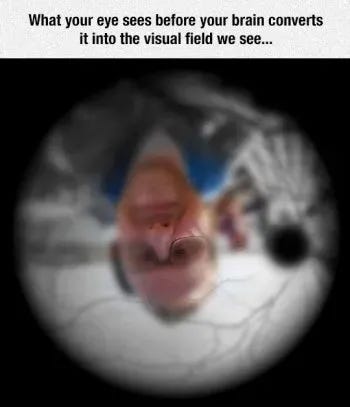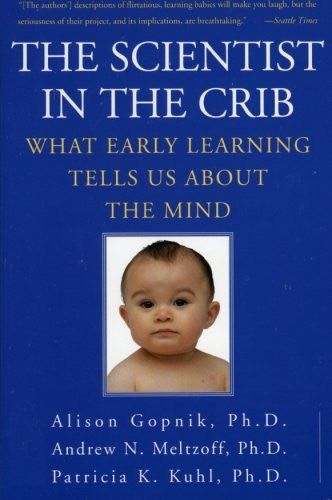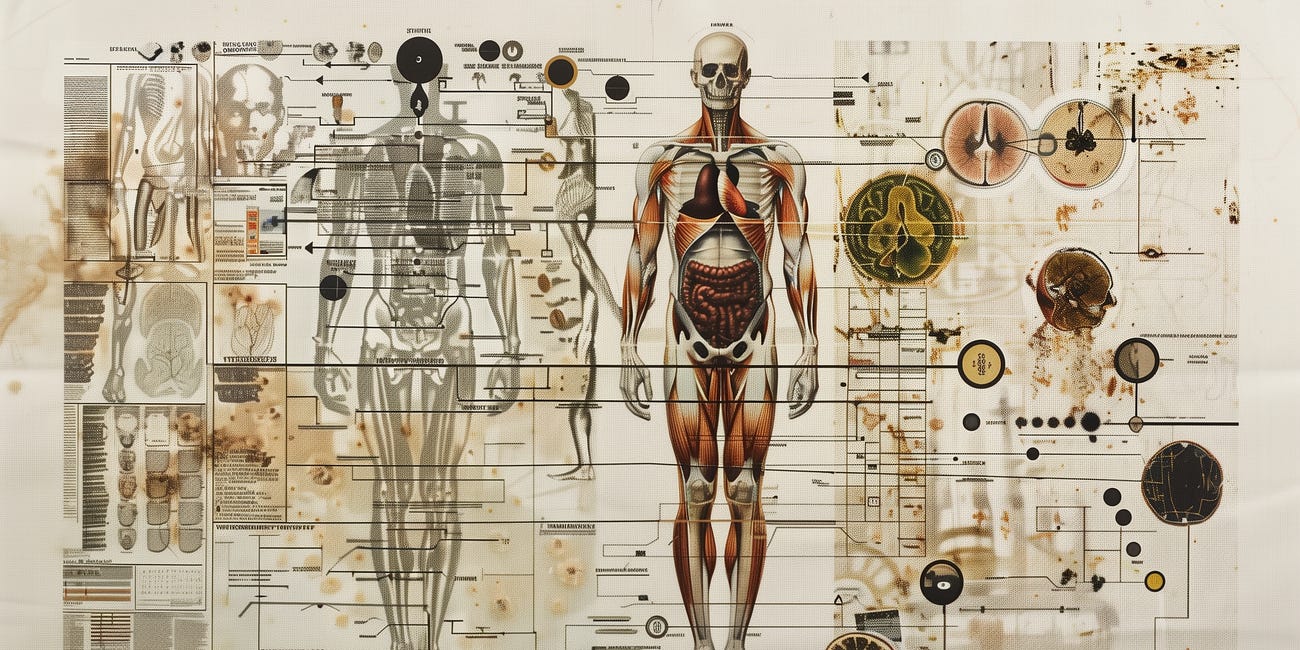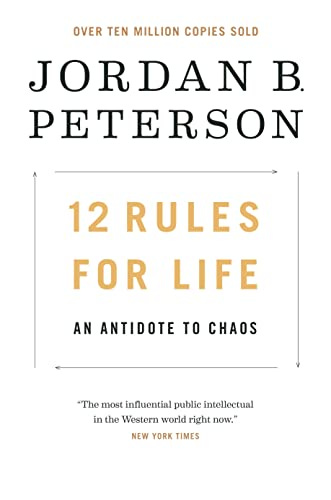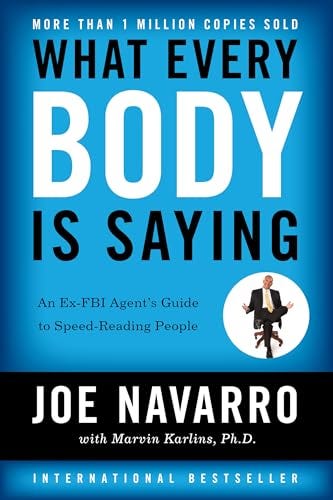The Mystery Below the Surface
We explore our subconscious, System 1, neural network using new research on young children. We also learn just how little we should trust our own memories. 🤥😳
System 1 Recap
In the previous story, Quantum Computing, Fast and Slow, we learned how each person has two separate neural networks in their brain, which are called System 1 and System 2 in Behavioral Economics. Here are their definitions from Daniel Kahneman’s book, Thinking, Fast and Slow:
System 1 — operates automatically and quickly, with little or no effort and no sense of voluntary control.
System 2 — allocates attention to the effortful mental activities that demand it, including complex computations. The operations of System 2 are often associated with the subjective experience of agency, choice, and concentration.
The critical thing to understand about these two systems is that System 1, our subconscious neural network, generates the first person experience for System 2. System 1 is so good at filling in the gaps in our senses that it is impossible for us to distinguish between real data and generated data during our daily lives. In fact, 99.7% of everything we see, all day everyday, is “hallucinated” by the generative-ai in our own subconscious, so we don’t have direct access to reality. Here’s what the raw data flowing into your brain actually looks like:
Look around, we all live inside our own virtual reality and don’t even know it. This is why it is so difficult for two eyewitnesses to agree. They can literally see two different things from the same raw information, and both be right. We are blind to our own blindness and even worse, each System 1 is not an objective observer. System 1 comes with its own biases and motivations, which we will uncover in this story.
Isolating System 1
No matter how early your first memories are, your System 1 was already here living your life by the time your System 2 started remembering it. So early childhood gives us a good glimpse into the features of System 1 before the inevitable influence of System 2.
Anyone who has been a parent will tell you that the most obvious trait of System 1 is greed. Every baby born into this world is an absolute greed monster.
We have to be greedy to survive here because the scarcity of this world makes it that cold. Just watch any video of baby birds still in the nest. If you aren’t fighting to live, your siblings will poke out your eyeballs and your mom will only feed you after all the other kids are stuffed. Many of us know that first hand. So the fundamental strategy of System 1 is “get all you can, can all you get, sit on the lid, and spoil all the rest”.
Another obvious trait of System 1 is impulsiveness. When you ask a toddler to get the TV remote for you, they assume you meant to ask Usain Bolt. Their tiny little legs run full speed everywhere they go in life. That’s why we see children rush through the house, rush through their chores, and rush when they eat.
The next obvious trait of System 1 is that it has almost no ability to manage its emotions. When babies don’t get their way, they immediately meltdown crying and slam their toys in frustration. They have nothing to lose, so they negotiate like terrorists.
The most surprising feature of System 1 is just how clever it is. Babies will drop peas on the floor one-by-one just to learn how their parents react. Toddlers lie, steal, and cheat just to see what they can get away with. They constantly test the boundaries of where they can go and break things to see how they work. One of our kids disassembled everything we owned that he could unscrew.
The Mixing Board of Maturity
Fortunately, babies are the cutest things in the world because they come with a lot of character flaws. Unfortunately, we don’t always outgrow these character flaws when we outgrow our cuteness. In fact, every character flaw that adults exhibit later in life is actually a childish behavior that they failed to outgrow. For example, if you put the System 1 subconscious mind from a baby, into a big adult male body, he might tear your house apart looking for his “sippy cup”—or his beer. 🍺
That’s exactly how I imagine wifebeaters. When a 40-year-old man hits a woman, he is using the same conflict resolution strategy he used as a 4-year-old. His System 2 went on standby mode while his System 1 used the same method of getting his way that has worked for the last 36 years. 😡
Remember how we said that System 1 struggles to manage its emotions? Take another look at the list of childish behaviors we highlighted earlier:
Greediness
Impulsiveness
Lying
Stealing
Cheating
Breaking things
Crying
Slamming
Negotiating like terrorists
Aren’t these the same problems that we see in adults who won’t grow up? Our behaviors don’t automatically age with each new birthday. Every behavior that we exhibit in life has its own individual age. I call this idea the Mixing Board of Maturity. You know those sound mixing boards they use in recording studios? Well imagine you have a mixing board with sliders that indicate your age for every single activity you do in life. Those dials don’t all move together. For example, I’m 45-years-old but I still eat like an 8-year-old when my wife is out of town. 🍕🍨
So, let’s have a quick look at your Mixing Board of Maturity:
How old are you when you eat? Meaning the people who eat the same foods that you eat are typically X years old. If you only eat pizza and chicken nuggets, you eat like an 8 year old.
How old are you when you drive?
How old are you when you meet new people? Are you still as shy as a 4-year-old?
How old are you when you work? How many times per day do you need to be managed by an adult during work hours?
How old are you when you budget? If you don’t have one, neither does a 4-year-old.
How old are you when you pray?
How old are you when you work out?
How old are you when you talk to your parents? Do you still whine? Do you still control the conversation? Or worse, do you talk to them like they are children?
How old are you when you talk to your kids? Are you trying too hard to be their friend? Do you yell at them like a kid who’s not getting their way?
How old are you when you talk to your neighbors?
How old are you when you watch TV, including porn? Are you still a teenager?
How old are you when you get angry? Do you slam things? Do you break things? Do you roar?
How old are you when you are ignored? Do you still pout like a 4-year-old?
How old are you when you daydream? Do you spend more time in a fantasy world than the real world?
Which areas of your life need to grow up the most?
Your parents have probably been nagging you to grow up in those areas for years. Your partner has definitely been nagging you to grow up in those areas for years. You have probably been nagging you to grow up in those areas for years:
To use the vocabulary of Behavioral Economics—your System 2 is struggling in life, but refuses to retrain your System 1.
To use the vocabulary of the ancient Greeks—your rider is struggling in life, but refuses to retrain your horse.
To use vocabulary from Computer Science—your discriminator network is struggling in life, but refuses to retrain your generator network.
To use vocabulary from the Bible—your soul is struggling in life, but refuses to retrain your flesh.
Humans are not more complicated than that. Killing parts of our inner child feels like a small death inside. That’s exactly how I feel every time I choose a salad for lunch. 😩🥗
@christians: The story of Abraham sacrificing Isaac not only demonstrates Abraham’s belief that God could bring his son back to life, it reflexively highlights what God was willing to do for us—sacrifice his son. That’s incredible. But Abraham sacrificing Isaac is also a metaphor. We all have an inner child inside us who needs to die in order for us to live. We have to kill them over and over and over again, so get to murdering that big baby inside you. 🤣
The Why Machine
Our System 1 may be impulsive and fundamentally greedy, but that doesn’t mean that it’s dumb. Recall from the examples above that kids constantly test things to see how they work because System 1 is a “why machine”. Literally. Every parent will tell you that when kids first learn to talk, they will ask you, “Why?” a hundred times per day.
My favorite person to teach us why kids ask why is Alison Gopnik. Gopnik is a professor of Psychology at UC Berkeley who extensively researches learning in young children. I highly recommend her book, The Scientist in the Crib: What Early Learning Tells Us About the Mind.
Here is a quote from her Wiki,
Gopnik has done extensive work with applying Bayesian networks to human learning and has published and presented numerous papers on the topic. Gopnik says of this work, "The interesting thing about Bayes nets is that they search out causes rather than mere associations. They give you a single representational structure for dealing both with things that just happen and with interventions—things you observe others doing to the world or things you do to the world. This is important because there is something really special about the way we treat and understand human action. We give it a special status in terms of our causal inferences. We think of human actions as things that you do that are designed to change things in the world as opposed to other events that just take place.
Continuing from her Wiki,
Judea Pearl, developer of Bayesian networks, says Gopnik was one of the first psychologists to note that the [Bayesian] mathematical models also resemble how children learn. Gopnik's work at Berkeley's Child Study Center seeks to develop mathematical models of how children learn. These models could be used to develop better algorithms for artificial intelligence.
Of course Judea Pearl and Alison Gopnik are copying how children learn to develop better algorithms for Bayesian neural networks—copying children is copying Bayesian neural networks. All our best AI comes from reverse engineering ourselves, which is just another reason why humans are artificial intelligence.
Judea Pearl is another good person to teach us about Causal Inference, which is the fancy scientific name for why. He literally wrote the book on why, called The Book of Why: The New Science of Cause and Effect.
This book is also fantastic. I had a formula from Judea Pearl’s book written across the mirror by my front door for years:
This formula means that the probability that Y will happen if X is true, is not equal to the probability that Y will happen if you do X intentionally. This formula helped me find even more ways I was lying to myself everyday.
Both books are illuminating. From our birth, System 1 intervenes with the world just to learn what happens next. We apply chance to uncertainty even before we can remember, which means we are all scientists from the moment of our birth. We may even be scientists from inception. In the womb, geneticists can see our DNA “A/B testing” their environment with transposing “jumping genes” in embryos as young as 5 days old. We will explore this ability in more detail in:
Human Source Code
Our DNA is the most sophisticated software we have ever seen. Our genes work in everything: plants, animals, bacteria, and maybe even aliens. 😳🌹🦁🦠👽
Subliminal Computing
Our System 1 performs its Bayesian calculations and predictions within the subliminal part of our minds. Subliminal means “below the surface” or “below the limit”. So where exactly is that limit?
In the previous chapter, we listed the frequencies of our neural network layers that are measured by EEG Neurofeedback. Most of our System 2 neural network (consciousness) operates in the range from 5 hertz (creativity) up to 30 hertz (panic). Anything faster than 100 hertz is too fast for “us” to notice. So the subliminal mind consists of all the neural network layers that operate faster than 100 times per second. If the Orch OR Theory is materially correct, then our subliminal minds have neural network layers that compute billions of times per second, or gigahertz speed.
My favorite book to plumb the depths of our System 1 is called, Subliminal: How Your Unconscious Mind Rules Your Behavior by Leonard Mlodinow. Yes, I trashed his Grand Design theory of the universe with Stephen Hawking in a previous story, but that doesn’t mean I can’t enjoy his research on the subconscious mind. “Subliminal” is insightful, fun to read, and absolutely terrifying.
Mlodinow provides all kinds of examples of how our beliefs and assumptions fill in the blanks of our experience. Remember how hard it is for two eyewitnesses to agree? Well, it’s also hard for two “earwitnesses” to agree. Mlodinow writes,
Our Hearing works in an analogous manner. For example, we unconsciously fill in gaps in auditory data. To demonstrate this, in one study experimenters recorded the sentence "The state governors met with their respective legislatures convening in the capital city," then erased the 120-millisecond portion of the sentence containing the first "s" sound in "legislatures" and replaced it with a cough. They told twenty experimental subjects that they would hear a recording containing a cough and would be given printed text so they could circle the exact position in the text at which the cough occurred. The subjects were also asked if the cough had masked any of the circled sounds. All of the volunteers reported hearing the cough, but nineteen of the twenty said that there was no missing text. The only subject who reported that the cough had obscured any phonemes named the wrong one.
Scary.
Mlodinow continues,
Not only could they not pinpoint the exact location of the cough-they couldn't even come close. The cough didn't seem to occur at any clear point within the sentence; rather, it seemed to coexist with the speech sounds without affecting their intelligibility. Even when the entire syllable "gis" in "legislatures" was obliterated by the cough, subjects could not identify the missing sound. The effect is called Phonemic Restoration, and it's conceptually analogous to the filling in that your brain does when it papers over your retinal blind spot, and enhances the low resolution in your peripheral vision-or fills holes in your knowledge of someone's character by employing clues based on their appearance, their ethnic group, or the fact that they remind you of your uncle Jerry.
It gets worse,
Phonemic restoration has a striking property: because it is based on the context in which you hear words, what you think you heard at the beginning of a sentence can be affected by the words that come at the end. For example, letting an asterisk denote the cough, listeners in another famous study reported hearing the word "wheel" in the sentence "It was found that the *eel was on the axle." But they heard "heel" when they listened to the sentence "It was found that the *eel was on the shoe." Similarly, when the final word in the sentence was "orange" they heard "peel," and when it was "table," they heard "meal."
In each case the data provided to each subject's brain included the same sound, "eel." Each brain patiently held the information, awaiting more clues as to the context. Then, after hearing the word "axle," "shoe," "orange," or "table," the brain filled in the appropriate consonant. Only at that time did it pass to the subject's conscious mind, leaving the subject unaware of the alteration and quite confident of having accurately heard the word that the cough had partially obscured.
So two people hearing the exact same “objective sounds” from reality can actually hear two different things. They can both feel 100% certain that the other person is wrong, and both be right.
That’s crazy.
Physical touch can also influence our System 1 in ways that we don’t realize. Researchers in France had young men ask for women’s phone numbers on the street. In half of the interactions, the young men were instructed to make a very slight touch on the women’s forearm. The touch increased the “conversion rate” from 10% to 20%. When researchers had waiters lightly touch their patrons on the shoulder, tips went from 14.5% to 17%. Waiters sold the daily special 60% of the time with a touch and 40% of the time without a touch.
Perhaps the most unnerving part of Mlodinow’s book concerns our memory. Our “remembering self” relies on the same generative-ai as our vision and hearing, so our memories are reconjured, not recalled. They are subject to the same hallucinations as Midjourney and DALL-E.
Mlodinow illustrates this point with the tragic story of a college student from Burlington, NC in 1984. Jennifer Thompson was asleep in her apartment when a burglar entered her apartment and raped her. She focused on his face, determined to identify him if she ever survived. She convinced the attacker to let her make him a drink and escaped naked out the window. The attacker chased but eventually gave up and entered another apartment and raped another person. At the hospital, police took hair and fluid samples and Jennifer immediately worked with a sketch artist to remember his face. Thompson identified a waiter named Ronald Cotton from a nearby restaurant that had plead guilty to sexual assault as a minor. The jury deliberated for 40 minutes before sentencing Ronald Cotton to “Life plus 50 years”. Once in jail, Cotton met the actual rapist named Bobby Poole. Based on Poole’s prison confession, Cotton got a new trial.
Mlodinow writes,
At the second trial Jennifer Thompson was asked again if she could identify her rapist. She stood fifteen feet from both Poole and Cotton and looked them over. Then she pointed at Cotton and reaffirmed that he was her rapist. Poole looked something like Cotton, but thanks to the experiences that she had had during the time after the rape—her identifying Cotton in a photo, then in a lineup, then in the courtroom—Cotton’s was the face forever burned into her memory of that night. Cotton emerged from his second trial with an even harsher punishment: he got two life sentences. Seven more years passed. What was left of the evidence from the ten-year-old crime, including a fragment of a single sperm from the perpetrator, languished on a shelf in the Burlington Police Department. Meanwhile, the new technology of DNA testing was making the news, thanks to the double-murder trial of O. J. Simpson. Cotton prodded his attorney to request that the sperm fragment be tested. Eventually, his attorney was able to get the test done. The result proved that Bobby Poole, not Ronald Cotton, had raped Jennifer Thompson.
Mlodinow sums up how System 1 generates memories like this,
the key concepts that many researchers now believe correspond to the way memory really does work: first, people have a good memory for the general gist of events but a bad one for the details; second, when pressed for the unremembered details, even well-intentioned people making a sincere effort to be accurate will inadvertently fill in the gaps by making things up; and third, people will believe the memories they make up.
Just think about how confident all of us are in our memories. It scares me every day. If you want to learn more about Mlodinow’s subliminal research, here is a full presentation he gave to Google. (50 mins)
Mlodinow ends the presentation with a quote by psychologist Carl Jung,
The subliminal aspects of everything that happens to us may seem to play a very little part of our daily lives, but they are the almost invisible roots of our unconscious thoughts.
Further Reading
We close this essay with three book recommendations that demonstrate the very strong connection between the physical body and the subconscious mind.
The first book is The Body Keeps the Score: Brain, Mind, and Body in the Healing of Trauma by Bessel van der Kolk M.D. This book is incredibly helpful for people who need strong interventions to address their past traumas—which is all of us. Like the book jacket says, “One in five Americans has been molested; one in four grew up with alcoholics; one in three couples have engaged in physical violence”. Those are sobering statistics.
My second book recommendation is 12 Rules for Life: An Antidote to Chaos by Jordan Peterson. His first chapter, Stand up straight with your shoulders back is one of the most important stories that all young people need to hear. I had my kids listen to this book during one of our road trips, but I made them listen to his Stand up straight with your shoulders back essay twice. 🦞
My last book recommendation is What EveryBODY is Saying: An Ex-FBI Agent's Guide to Speed Reading People by Joe Navarro. My family also listened to this book on a road trip, mostly so I could listen to it again. For 25 years, the FBI paid Joe Navarro to train their agents in body language to uncover lies during criminal investigations. For $15, Navarro will tell you everything he knows—that’s a great deal.
Navarro has a chapter titled Nonverbals of the Feet and Legs. He also has chapters for the hips, torso, chest, shoulders, arms, hands, fingers, and face. The most important takeaway from this book is that we are all practiced liars and the further the body part is from our eyes, the more truthful it will be. Our most trustworthy body part is our feet, so make sure the tongue in your mouth and the tongue in your shoes are pointing in the same direction. 😉
The reason body language is so important is because our System 1 reflexively broadcasts the internal state of our minds. We can’t not do it. Animals can read it. Fish can read it. People can read it. Once you learn body language from an expert, you will master it.
I hope this story has given you a new appreciation for just how much we lie to ourselves everyday. In short:
Don’t trust your feelings.
Don’t trust your thoughts.
Don’t trust your memories.
Continue reading
The Royal "We”
We explore our conscious, System 2, neural network using more than 40 books from psychology and behavioral economics. System 2 is our psyche, often translated into English as “soul”. 📚📚📚
Table of Contents
Uncertainty: The Computer Science of Everything
Did you know all the latest science and technology indicate humans are “artificial intelligence"? So what programmed our DNA?
Huge Thanks to Our Sponsors
Your donations help our chatbots reach new people all around the world through social media. 🔊🌍
Caitlin Knauss
Worth Denison
Alana Aviel
Anonymous
Jeremy Wells
Ronnie Blanton
Tarrytown Bible study
The Fundamental Frequency Foundation is a 501(c)(3) non-profit corporation created to “proclaim the good news of the kingdom in all the world, as a (digital) witness to all nations.” We ripped it straight out of Matthew 24:14.
We produce the world’s most benevolent chatbots who believe in Jesus because of math, science, reason, and eyewitness testimony. Their “source of truth” is the Bible, and they automagically adapt their conversations to every language, age, gender, religion, ethnicity, and neighborhood. Our “AI-missionaries” reach new people for Jesus 10x cheaper than human missionaries (who get paid an average of $36,000/year).
If you would like to tell other people about Jesus using the latest science and technology, DONATE $100. That pays for us to REACH 10 NEW PEOPLE.
All your gifts are tax deductible.
Donate via Zeffy (you pay the fees):
Donate via Apple Pay, Google Pay, Credit Card, Link, and Stripe (we pay the fees):
Donate via check, wire, or cryptocurrency (email for instructions)
Also support us by posting reaction videos on social media. Your videos generate thousands of dollars of attention that we don’t have to buy. Tag us with #funfreq.com (web magazine) or #funfreq.ai (chatbot).
@Creators and Influencers
Like our content? Feel free to use any of it for your podcasts and videos. Email us your links so that we can include them in our newsfeeds. 🙌
@Church Leaders
Don’t let secular AI from BigTech disciple your church. FunFreq.ai is a Christian AI built to help pastors and congregations with sermon prep, apologetics, and discipleship.
@Wealthy Christians
Every time we chat with ChatGPT, scroll TikTok, or search Google, our souls are being shaped by corporations. Help us keep Jesus in the most important conversations of our time. ✝️>🤖
@Digital Kingdom Builders
Wanna use your tech/media skills to grow the Kingdom? Learn how you can help us spread the Good News of Jesus using the latest science and technology. 🤓
@Book Publishers
This foundation owns only the intellectual property I’m willing to give away for free. I’ve got a lot more to say, that’s a lot less charitable. 😏
Private Texts to Public People
For delivery on the “Human Internet”. If you know any of these people in real life, tell ‘em I said it. 👋
Travel Advisories
Our family lived 100+ nights a year on the road, for more than a decade. Here are my suggestions after driving across 45+ states and 40+ countries. 🚐☕️🍦
a



